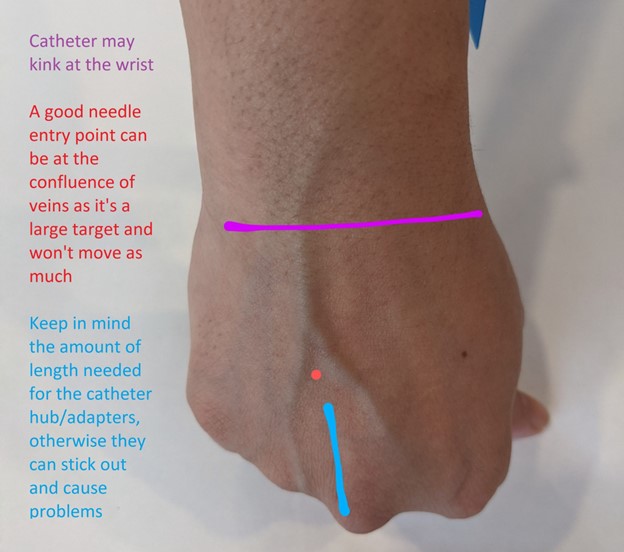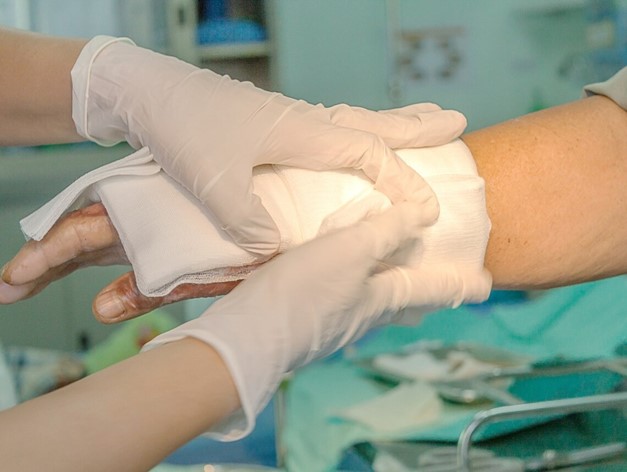A nurse is preparing to administer IV fluids to a client.
The nurse notes sparks when plugging in the IV pump.
Which of the following actions should the nurse take first?
Notify the biomedical department to fix the pump.
Obtain a replacement pump.
Label the pump with a defective equipment sticker.
Unplug the pump.
The Correct Answer is D
The correct answer is d. Unplug the pump.
Rationale for Choice A:
- While notifying the biomedical department to fix the pump is important, it is not the immediate priority in this situation. The first step is to ensure patient and staff safety by removing the potential electrical hazard.
- Delaying the removal of the sparking pump could lead to electrical shock, fire, or other serious consequences.
- Biomedical staff can be notified after the immediate safety risk has been addressed.
Rationale for Choice B:
- Obtaining a replacement pump is necessary to continue the client's IV therapy, but it is not the first action the nurse should take.
- The priority is to eliminate the electrical hazard posed by the sparking pump.
- Once the faulty pump is unplugged and safety is ensured, the nurse can then proceed to obtain a replacement pump.
Rationale for Choice C:
- Labeling the pump with a defective equipment sticker is important to prevent others from using it, but it does not address the immediate safety risk.
- The priority is to disconnect the pump from the power source to eliminate the risk of electrical shock or fire.
- Labeling can be done after the pump has been unplugged and the situation has been assessed.
Rationale for Choice D:
- Unplugging the pump is the correct first action because it immediately removes the electrical hazard, preventing potential harm to the patient, staff, or equipment.
- This action prioritizes safety and mitigates the risk of electrical shock, burns, fire, or other serious consequences.
- It is essential to act quickly and decisively in such situations to ensure a safe environment for everyone involved.
Nursing Test Bank
Naxlex Comprehensive Predictor Exams
Related Questions
Correct Answer is D
Explanation
The nurse should place the extremity in a dependent position before inserting an IV catheter.
This helps to dilate the veins and make them more visible and easier to access.

Choice A is wrong because the nurse should choose a site that is distal to the most proximal site on the extremity selected.
This helps to preserve more proximal sites for future use if needed.
Choice B is wrong because applying a cool compress before insertion of an IV catheter can cause vasoconstriction and make it more difficult to access the vein.
Instead, a warm compress can be applied to help dilate the veins.
Choice C is wrong because the tourniquet should be placed above, not below, the proposed insertion site to help dilate the vein and make it easier to access.
Correct Answer is B
Explanation
A nurse can delegate the task of performing a simple dressing change to an assistive personnel.
Delegation is an essential nursing skill that allows a qualified healthcare worker, like an RN, to transfer routine and low-risk duties to nursing assistive personnel.
This frees up the RN’s time to address more pressing matters, including critical patients and tasks.

Choice A is wrong because changing IV tubing is not a task that can be delegated to assistive personnel.
Choice C is wrong because inserting an NG tube is not a task that can be delegated to assistive personnel.
Choice D is wrong because evaluating the healing of an incision is not a task that can be delegated to assistive personnel.
These tasks require the expertise and training of a licensed nurse.
Whether you are a student looking to ace your exams or a practicing nurse seeking to enhance your expertise , our nursing education contents will empower you with the confidence and competence to make a difference in the lives of patients and become a respected leader in the healthcare field.
Visit Naxlex, invest in your future and unlock endless possibilities with our unparalleled nursing education contents today
Report Wrong Answer on the Current Question
Do you disagree with the answer? If yes, what is your expected answer? Explain.
Kindly be descriptive with the issue you are facing.
